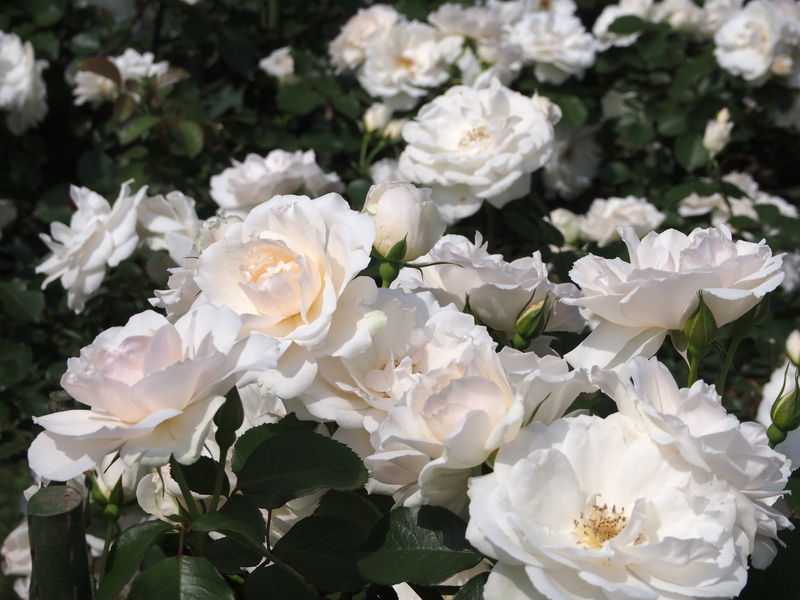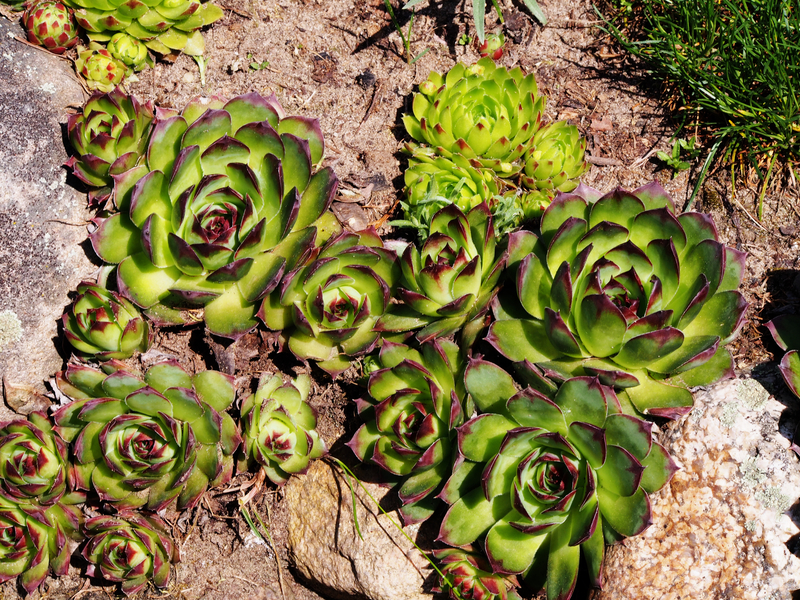How to Design the Perfect Herb Garden
Posted on 24/05/2025
How to Design the Perfect Herb Garden: An In-Depth Guide
A beautifully designed herb garden is more than just a source of fresh flavors and captivating scents--it can be a centerpiece of your landscape, a haven for pollinators, and a therapeutic space for mindful relaxation. Whether you have a sprawling backyard, a modest courtyard, or just a sunny balcony, you can create the ideal herb garden tailored to your space and tastes. This comprehensive guide will walk you through every step, from planning your layout to choosing the best herbs and ensuring your garden thrives year-round.

Why Design an Herb Garden?
Designing the perfect herb garden provides numerous benefits for gardeners of all experience levels. Not only will you have fresh herbs at your fingertips, but the process also offers:
- Aromatherapy: Enjoy relaxing fragrances like lavender and mint.
- Fresh Flavors: Enhance your culinary creations with homegrown oregano, basil, and chives.
- Pollinator Support: Attract bees and butterflies with flowering herbs.
- Visual Appeal: Design the garden as an aesthetic focal point in your landscape or home.
- Therapeutic Value: Gardening can be a mindful, stress-relieving activity.
Planning Your Herb Garden: Key Considerations
1. Evaluate Your Space
Sunlight is essential for most culinary herbs. Herb garden design should begin with an honest assessment of your growing conditions:
- Sunlight: Most herbs need at least 6-8 hours of direct sunlight daily. Mediterranean herbs like rosemary and thyme thrive in full sun.
- Space: Measure the area you can dedicate to your herb garden. Even windowsills and balconies can be ideal for small-scale gardening.
- Soil or containers: Assess your soil type and drainage. Consider raised beds or containers if soil is poor or you lack ground space.
- Accessibility: Place your herb garden near your kitchen for convenience, or in an area that's easily accessible for regular care.
2. Choose a Design Style
There are countless herb garden layout ideas to inspire your project. Consider these popular approaches:
- Formal Herb Gardens: Traditional knot gardens with geometric patterns, low hedges (such as boxwood), and symmetry.
- Cottage Style: Informal, exuberant arrangements where herbs mingle with edible and ornamental flowers.
- Container Herb Gardens: Ideal for patios and balconies. Use pots, window boxes, or vertical planters to maximize space.
- Raised Beds: Organize herbs in defined, elevated beds for easier maintenance.
- Mixed Borders: Integrate herbs among vegetables, fruits, and ornamentals.
Tip: Sketch your space and experiment with different layouts on paper before you start planting.
How to Choose the Best Herbs for Your Garden
One key to designing the best herb garden is plant selection. Focus on the herbs you'll use most, or those best suited for your climate:
- Sun-Loving Herbs: Basil, oregano, thyme, rosemary, sage, marjoram, and lavender love full sun.
- Shade-Tolerant Herbs: Mint, parsley, chives, cilantro, and lemon balm can tolerate partial shade.
- Annuals: Basil, cilantro, dill--fast growers, but they need to be replanted each year.
- Perennials: Chives, mint, oregano, thyme, sage, and rosemary--return year after year, increasing your harvest.
- Specialty Herbs: Consider medicinal herbs (echinacea, chamomile) or unique culinary choices (shiso, lemon verbena).
Pro Tip: Group herbs with similar water and sunlight requirements for easier care.
Step-by-Step Guide: Designing Your Herb Garden
Step 1: Prepare Your Site
- Clear existing weeds, grass, or debris.
- Loosen soil to a depth of 8-10 inches. Amend with compost for fertility and structure.
- If using containers, select ones with good drainage and fill with a high-quality potting mix.
Step 2: Plan the Layout
- Accessibility: Leave at least 18 inches between beds or rows for easy maintenance.
- Height Consideration: Taller herbs (fennel, dill, rosemary) go at the back or center. Smaller herbs (thyme, oregano) at the front or edges.
- Companion Planting: Avoid crowding aggressive spreaders like mint--contain them in pots or separate beds.
- Design Features: Create visual interest with spiral beds, decorative edging, or path stones.
Step 3: Plant Your Herbs
- Gently loosen root balls before planting.
- Space herbs according to mature size; check seed packets or plant labels for guidance.
- Water thoroughly after planting and mulch lightly to retain moisture and suppress weeds.
Step 4: Add Personal Touches
- Label plants with creative markers for easy identification.
- Add decorative features: small statues, trellises for vining herbs (like hops), or birdbaths to attract pollinators.
- Include seating or stepping stones to create a welcoming environment.
Essential Tips for Maintaining Your Herb Garden
- Watering: Most herbs prefer well-drained soil. Water deeply when the top inch of soil is dry, but avoid waterlogging.
- Harvesting: Regularly pick leaves to encourage bushier growth and prevent flowering (which can reduce flavor).
- Fertilizing: Most herbs are light feeders. A seasonal application of compost or organic fertilizer is sufficient.
- Pest Control: Encourage beneficial insects and hand-pick pests as needed. Avoid harsh chemicals that can taint edibles.
- Winter Protection: Mulch perennials before freezing weather and bring tender herbs indoors if possible.
Did you know? Certain herbs such as basil, cilantro, and parsley can be grown indoors year-round for a continual fresh supply!
Creative Herb Garden Design Ideas
1. Herb Spiral
An herb spiral is a popular permaculture technique that maximizes growing area in a small footprint. Build a mound of soil and stones in a spiral, planting sun-loving, drought-tolerant herbs at the top and moisture-loving varieties near the base. This creates diverse microclimates in a visually intriguing form.
2. Vertical Herb Walls
Short on ground space? Use wall-mounted planters or repurposed pallets to assemble a lush, living wall. Perfect for urban dwellers and easy to maintain when placed near the kitchen door.
3. Kitchen Window Box
Grow your favorite culinary herbs within arm's reach on a sunny windowsill. Choose compact varieties and rotate regularly for uniform light exposure.
4. Fragrant Pathway Borders
Edge your garden paths with low-growing, aromatic herbs like thyme or chamomile. Enjoy a burst of fragrance every time you stroll by.
Common Mistakes to Avoid in Herb Garden Design
- Overcrowding: Herbs need space to grow and good air circulation to prevent disease.
- Poor Drainage: Soggy soil causes root rot. Always use well-draining substrate or add sand to heavy soils.
- Ignoring Sun Requirements: Don't plant sun-loving rosemary in deep shade or shade-tolerant mint in full sun for best results.
- Mixing Aggressive Spreaders: Plants like mint and oregano can take over. Grow them in containers or restrict their roots with barriers.
Herb Garden Design Ideas for Small Spaces
Designing an herb garden is entirely possible even if you have minimal space:
- Vertical Planters: Grow upwards to save ground area and create a green privacy screen.
- Hanging Baskets: Herbs such as oregano and thyme trail beautifully from suspended pots.
- Stacked Containers: Arrange pots in tiers to maximize sunlight exposure.
- Tabletop Gardens: Group small pots on a patio table or shelf for a mini herb oasis.
Seasonal Care for the Year-Round Herb Garden
- Spring: Start new herbs from seed indoors or direct-sow hardy varieties.
- Summer: Regularly water and harvest to prevent bolting. Mulch to conserve moisture.
- Autumn: Prepare perennials for winter with a layer of mulch and bring tender herbs indoors.
- Winter: Grow herbs in a sunny window or under grow lights. Cut back dead stems on overwintering plants.

Frequently Asked Questions About Herb Garden Design
What is the best location for an herb garden?
Near the kitchen for convenient harvesting, in a spot with 6-8 hours of sun per day. Ensure it's accessible for watering and maintenance.
How do I keep herbs healthy and productive?
Water deeply, avoid over-fertilizing, and harvest often to encourage new growth. Keep beds weed-free and watch for pests.
Can I grow herbs indoors?
Absolutely! Use a sunny south- or west-facing window or supplemental grow lights. Choose compact or bushy varieties that suit containers.
How do I prevent invasive herbs from taking over?
Grow aggressive species like mint or lemon balm in pots or use buried root barriers to contain their spread.
Conclusion: Designing Your Own Herb Oasis
Designing the perfect herb garden is a rewarding project for gardeners of all levels. By following these steps and considering your unique needs and style, you can create a bountiful, beautiful space that provides fresh herbs for your table, fragrance for your senses, and delight for every visitor.
Start planning your own herb garden today and enjoy the endless benefits it brings to your home and life. Fresh flavor, vibrant colors, and healing scents await in your personalized green retreat!

